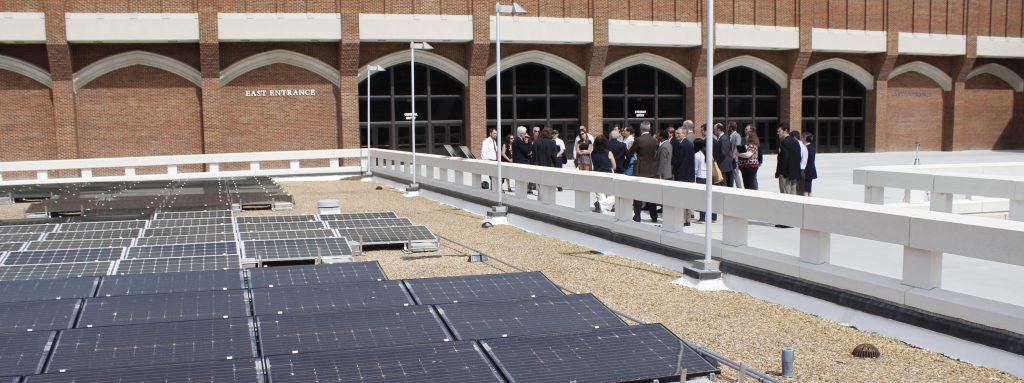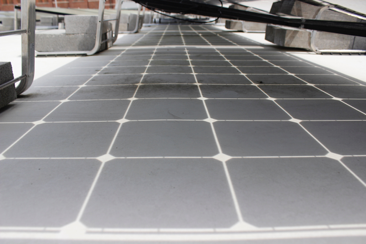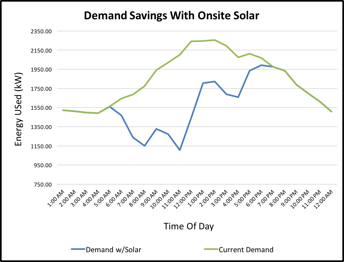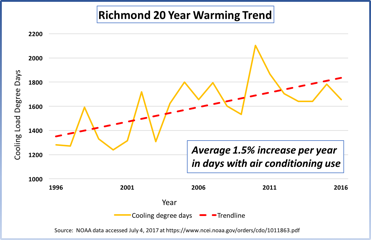Jul 27, 2017
Can Solar Panels Damage Your Roof?

The clean energy economy is booming in Virginia. Between 2014–2017, solar installations in the Commonwealth have grown from 17 MW to 192 MW, a 1,029% increase.
Meanwhile, in just the last year, Virginia’s solar industry added more than 1,200 new jobs to the economy. You’ve probably seen at least one of your neighbors, local schools, businesses, or community organizations install rooftop solar arrays in the last few years.
But one big question has stopped some organizations from going solar so far: Can solar panels damage your roof? Facility owners and managers may worry that installing solar panels could make holes in the roof that would cause water leaks and other problems that could risk voiding the roof’s warranty.
However, modern solar arrays installed by a reputable and skilled developer avoid these concerns. Even more, properly installed solar panels can turn your roof from a liability into an asset. Read more to find out why rooftop solar doesn’t have to be a hassle, and the six ways it can actually benefit your roof, your sustainability goals and your bottom line.
1. Solar Makes No Holes in The Roof

Commercial solar arrays are installed on either membrane, ballasted or standing seam roof surfaces. Standard rooftop solar installations use one of two standard racking methods to simplify the installation process on different roof surfaces: ballasted racking and roof clamp racking. Both systems create zero roof penetrations on any roof surface, maintaining the roof warranty.
Modern solar installations use ballast racking systems to secure a solar array on white TPO membrane, black EPDM membrane and ballasted roofs. Industry leading UNIRAC RM ballast trays secure solar arrays and can withstand hurricane-force winds.
To further protect the roof, an experienced solar developer such as Secure Futures uses rubber pads between the racking and the roof surface. Industry leading S-5! roof clamps provide a powerful and safe mounting system for solar panels on metal standing-seam roofs.
With this equipment, a rooftop solar array requies no roof penetrations to maintain its integrity and warranty. These clamps are the industry standard means to attach rooftop snow guards. Both racking types allow for flexible access to the roof under the panels. With easy assembly and racking system components, panels can be easily removed at the customer’s request when roof access is required. A reputable commercial solar developer will assist their customers throughout the term of the solar service agreement, guaranteeing system operation and maintenance.
2. Roof Warranty Guaranteed
As the solar industry continues to grow, different companies use a variety of standards when keeping the customer’s roof warranty intact. A small tear or dent in a roof during the solar installation may seem inconsequential in the short term, but can have a significant impact on the effectiveness of the roof in the long term.
Knowledgeable solar developers understand the importance of maintaining the integrity of a roof when installing a solar array. These companies work with their customers to guarantee the roof is not damaged during the installation, and that the system will not impact or void the customer’s existing roof warranty. Secure Futures even goes so far as to offer a written guarantee that solar panels won’t void your roof warranty.
3. Solar Provides Roof Cooling with Shading and Ventilation

Much like a tree above a building, solar panels absorb direct sunlight and provide shade to the roof – but without the mess of dripping tree sap and falling leaves and twigs! In turn, this shade effect cools the building’s inside air temperature.
A study by researchers at UC San Diego shows that a building’s ceiling was five degrees Fahrenheit cooler under solar panels than under a roof exposed to direct sunlight.*
For the building researchers analyzed, the panels reduced the amount of heat reaching the roof by about 38 percent. In addition to providing a barrier from harmful solar radiation, rooftop solar arrays allow air flow between the roof and the solar panels, adding to the cooling effect of the solar array. In turn, increased air flow and cooler temperatures help the efficiency of solar panels.
* Please note: This is the only published study with empirical data that solar panels cool the roof of the structure they are on. Dr. Ronnen Levinson of Lawrence Berkeley National Laboratory, a consultant on the study, said it has “limited value” because the test conditions do not match a typical residential or commercial building. Secure Futures’ own preliminary data shows a net temperature difference of 20-50 degree Fahrenheit on roofs with solar arrays compared to bare roof tops.
4. Solar Protects the Roof from Sun, Rain, Snow and Hail
Most roofs are damaged over time from exposure to various weather conditions. Rooftop solar arrays provide clean power to the building they are installed on, as well as serve as a physical barrier between the roof and mother nature. Solar panels help mitigate risks to the roof from ultraviolet (UV) radiation from the sun and damaging rain, hail or other severe weather events. By extending the lifetime of a roof, solar arrays can provide additional economic benefits in avoided repair costs. As this video shows, high quality solar panels are tough enough to stand up to harsh weather. That means the panels are providing a layer of protection against that harsh weather for your roof, which will help your roof last longer.
5. Solar Generates Power During Peak Cooling Loads

Many commercial buildings (businesses, schools, hospitals, churches, etc.) in Virginia use the most electricity during hot summer months, known as “cooling months.”
Such high energy loads are due to the large amount of electricity used by air conditioning units, which can account for up to 40% of all electricity used in commercial buildings. These peaks in energy demand add significant costs for large scale customers that are billed for both their electricity and demand.
Not surprising, the time of day a building’s electricity use is highest is also the time when solar power creates the most electricity. For instance, 10:00 am-2:00 pm is often when solar is producing the most — exactly the same time that a customer’s load is the highest.
Because of this, rooftop solar arrays can reduce the demand portion of an electric bill. Commercial customers with optimized solar reduce the demand portion of their electric bill and save additional money by reducing their energy use throughout the month. Additionally, as the number of days requiring air conditioning in Virginia continues to rise, the demand for electricity at peak usage times will increase, causing the price of electricity to rise. With reliable rooftop solar, you can hedge against increased cooling load costs.

6. Solar Turns Your Roof from a Liability to An Asset
Rooftop solar occupies a part of your business that would otherwise go unused and unnoticed. With solar, your roof can be leveraged into an important part of your organization to achieve your financial and sustainability goals. Secure Futures now provides solar energy at no capital cost to businesses and public purpose entities in Virginia through a solar service agreement. Learn about how solar can turn your roof from a liability into an asset with a free solar evaluation of your roof today.
Make This Your Year to Go Solar
Find out what it would take for your college, school, hospital or business to get solar on-site with no upfront capital investment and money savings every month.
